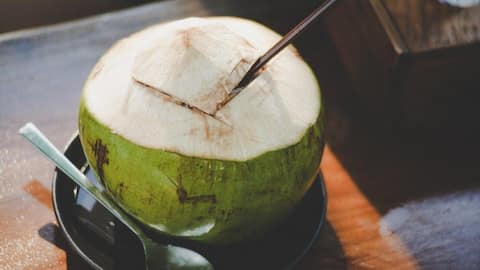Guide to choosing the perfect tender coconut
What's the story
Green coconuts, harvested at approximately seven months of age, are prized for their abundance of refreshing coconut water. Unlike their mature counterparts, these young coconuts contain a higher water content and are tender and jelly-like. Let us explore how to select the finest specimens of tender coconut to enjoy their natural goodness to the fullest.
Freshness
Sloshing sound
To assess a green coconut's freshness, hold it close to your ear and give it a vigorous shake. A lack of noise indicates ample water content and characteristics of young green coconuts. However, if you detect liquid sloshing, it may signal overripeness or potential cracks, leading to leakage. This simple test ensures you select the freshest green coconuts for optimal taste and quality.
Ripeness
Golden-brown hue
Choose a coconut with minimal brown patches on the husk. Rotate it to examine for consistent green color and absence of damage. If unable to find the perfect one, opt for the least discolored option, as it likely indicates freshness. Steer clear of coconuts with thick brown husks as they are most mature and tend to contain less water.
Shape
Roundness
When purchasing coconuts, pay attention to their shape. Round ones typically hold plenty of water, ideal for hydration. Those with a slightly elongated shape may be older and have less water content, suited for cooking in curries. Consider the shape to ensure you get the right type for your needs: round for drinking and elongated for cooking.
Stale
Check for molds
Inspect both ends of the coconut for mold. Press the stem or flat part on top to detect soft spots or mold. Flip it over to check for black spots underneath. Smell the coconut; if it emits a musty, moldy odor, avoid purchasing it. Mold on the husk can permeate the coconut, contaminating its water and flesh.
